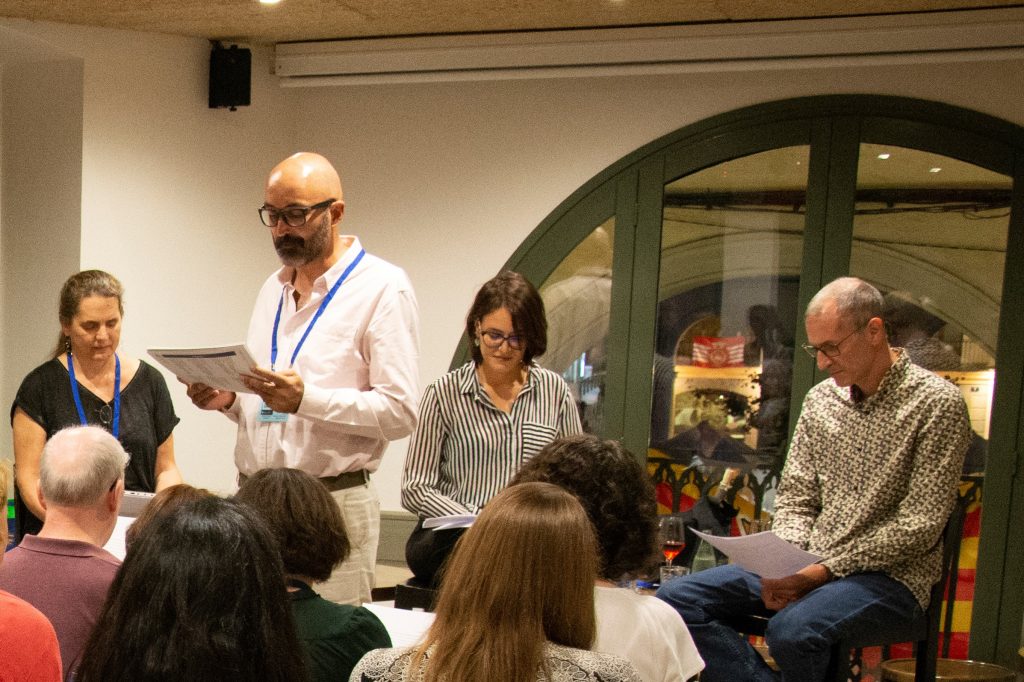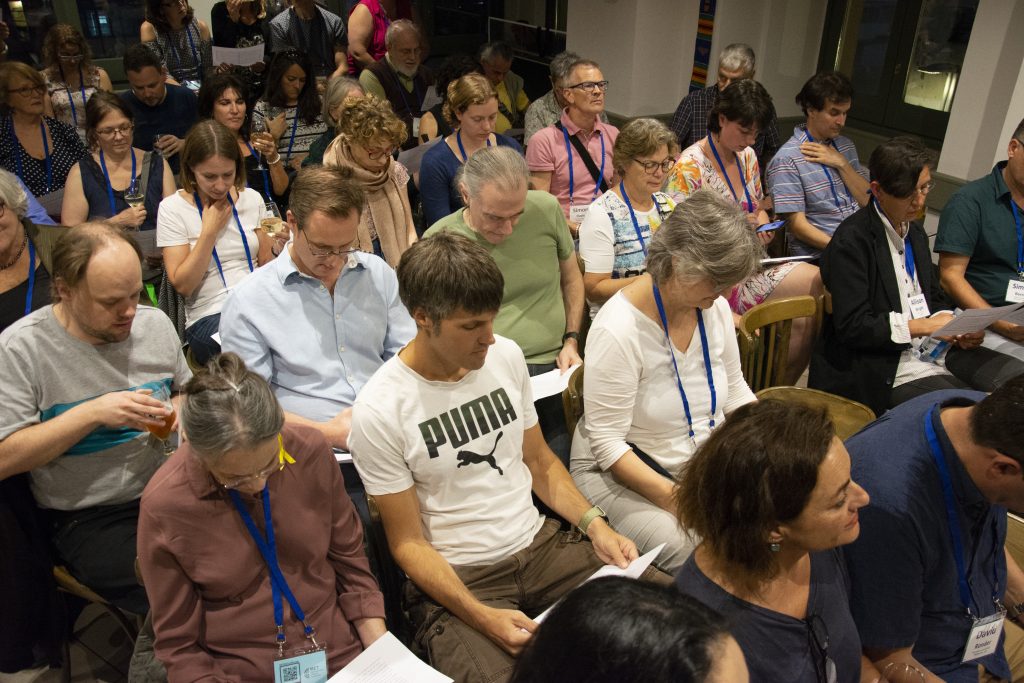I took part in a translation slam with Maeva Cifuentes as part of the Mediterranean Editors and Translators Meeting 2018 in Girona on 4 October 2018.
For anyone who is unfamiliar with the concept of a translation slam, the format is generally as follows: two translators present their translations of the same text, in front of an audience, and discuss the challenges of the translation, pinpointing similarities and differences, explaining the reasons for their choices and perhaps also recognising points where, in hindsight, they might have done things differently.
It’s perhaps best to think of it not so much as a competition or ‘duel’ (the other term sometimes used) but rather as an opportunity to put the translation process on show and explore in public how the same text can give rise to two different translations. I’ve been to a few slams in my time, both under the auspices of specific literary translation gatherings and for more general audiences at book festivals, and I was particularly happy with the way our slam went in Girona.
From left to right: Kymm Coveney, Carlos Mayor, Maeva Cifuentes, Tim Gutteridge. Photo credit Cesc Anadón. (c) MET
Here, in order of importance, are what I think make the ingredients for the perfect slam:
- Choose the right text. This seems obvious, but if your text doesn’t provide opportunities for different interpretations and different voices, then the slam is likely to suffer. For our slam in Girona, we translated El viaje, by Cristina Fernández Cubas. This was a piece of flash fiction (a one-page short story) about a Mother Superior who briefly leaves her convent but swiftly returns. It was absolutely perfect: self-contained, so all the ‘ripple effects’ that occur in translation were contained within the text, and included lots of great talking points – physical description, cultural references, voice, ambiguity – all in a mere 274 words! Hats off to Kymm Coveney for a brilliant choice. (And to Cristina, for writing it.)
- Audience participation. This might seem surprising as a second choice, but for a slam to really come to life, you need an audience that is engaged – and is willing to really question the translators’ choices. We couldn’t have asked for a better audience at Girona. Fifty colleagues – bringing to bear their experience as translators from different languages and in different fields, and also drawing on their personal backgrounds, and their readings of the text. The last thing I’d want, as a slammer, would be deference or polite appreciation. What I want is people contesting my choices, offering improvements of their own, and getting their teeth into the problems of accuracy, voice, coherence and all the rest of it. That was exactly what the METM crowd gave us.
- Moderation. I’d never really thought about this before, but taking part in the slam made me realise just how important the moderator’s role is. You need to be gentle yet firm, making sure that the translators get a chance to explain their choices, bringing the audience into the conversation – and teasing out anything important that you think has been missed. And you need to communicate your own enthusiasm for the source text and for the translation process. I would take my hat off to Kymm, but I’ve already done that above, and we translators hate repetition, so I shall remove my headgear instead.
- Translators. So what do the actual slammers bring to the party? Well, to start with you have to have the guts to put your work up for discussion (in this case, for an audience of peers, many of whom were inevitably far more experienced than either of us). Beyond that, the slam participants need to take a distinctive approach to the text – one that goes beyond ‘correctly’ translating individual sentences and instead provides a coherent interpretation of the source text, told in a distinctive voice. You need to be prepared to explain and defend your choices, but also to identify points where you feel you may have slipped or where other options – either from your fellow slammer or from the audience – might constitute improvements. And you need to be able to communicate your love of translation – the joys, the frustrations, the ambiguities, the beauty – to anyone who is prepared to listen. I hope that’s what my co-slammer Maeva Cifuentes and I managed to do. If I was any good at that, it’s only because I’ve had a year’s worth of training from my colleagues Victoria Patience and Simon Berrill, with whom I’ve been doing a monthly slam via Skype as part of our ongoing collaborative professional development partnership.
- The support team. An event like this doesn’t happen on its own. You need a venue, publicity, coordination and printouts, to name just a few factors. Unsurprisingly, the team at MET – who put together fantastic annual conferences and organise a programme of events throughout the year – did a great job. Well done Aisha Prigann, Helen Oclee-Brown and Kelly Dickeson, among others.
The real stars of the show? MET members study the slam texts. Photo credit Cesc Anadón. (c) MET

